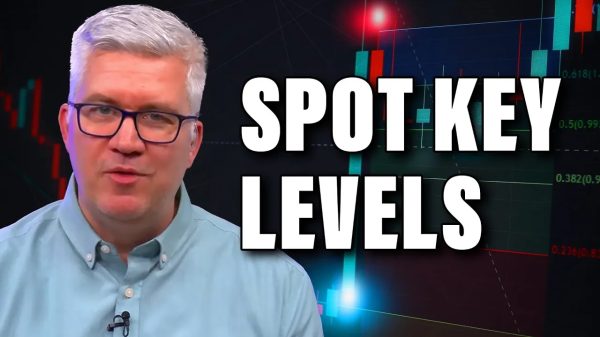Emerging Market Crises: Cyclical Patterns and Forex Forecasts
Currency crises in emerging markets are not merely isolated incidents but rather historical phenomena illustrating the cyclic nature of financial upheavals in the forex (Foreign Exchange) market. Typically triggered by factors such as excessive debt, political instability, and misaligned exchange rate policies, these crises offer vital lessons for predicting and managing future financial vulnerabilities. Let’s delve into past currency crises to uncover patterns and propose strategies for forex trading that could mitigate potential risks.
What Triggers a Currency Crisis?
A currency crisis occurs when a significant speculative attack depreciates a nation’s currency drastically or depletes its foreign reserves. Often, this leads to a sharp fall in the value of the currency, soaring inflation, or a sovereign debt default. Understanding the anatomy of these crises is crucial for forex traders and economic policymakers alike.
Tracing the Roots: Common Causes of Currency Crashes
High External Debt: Emerging markets often borrow extensively in foreign currencies. This exposes them to the risk of currency mismatches. As their national currency depreciates, the burden of repaying foreign debt intensifies, often precipitating a crisis. Historical instances like the Latin American Debt Crisis of the 1980s underscore the dangers of heavy reliance on foreign borrowing under fixed or inflexible exchange rate regimes. Fixed Exchange Rate Policies: The Asian Financial Crisis of 1997-98 highlighted the vulnerabilities associated with pegged exchange rates. Countries like Thailand, Indonesia, and South Korea maintained fixed exchange rates to the U.S. dollar. This, under speculative attack, led to swift currency devaluations and subsequent IMF (International Monetary Fund) bailouts. Political Instability: Political turmoil can exacerbate economic instability as seen in the Argentine Crisis of 2001-02, where political chaos contributed to the rapid depreciation of the peso. Similarly, the Turkish Lira Crisis in 2018 also reflected how political interference in economic policies can lead to severe market distrust and currency collapse.Forex Strategies: Trading Through Crises
Predictive Patterns: Identifying nations with high external debt, rigid exchange rate policies, and political unrest can help signal potential currency crises. These factors, combined with rapid debt growth and persistent current account deficits, provide a predictive framework for traders. Hedging Strategies: Forex traders can use futures and options to hedge against potential losses during currency crises. Effective hedging strategies involve locking in prices or using financial instruments to cover other investment positions against currency risk. Diversification: To reduce risk, traders should diversify their investments across various currencies and regions. This strategy spreads potential vulnerabilities, reducing the impact of a crisis in any single currency or country.A Closer Look: Major Currency Crises Reviewed
Latin American Debt Crisis (1980s)
Triggered by the global rise in interest rates and a drop in oil prices, countries like Mexico, Argentina, and Brazil faced defaults and economic chaos, necessitating IMF interventions. This crisis underscored the dangers of excessive foreign debt and reliance on commodity exports.
Asian Financial Crisis (1997-98)
Initiated by speculative attacks on the Thai baht, this crisis spread to other Asian Tigers. It also led to massive currency devaluations and economic reforms. The crisis revealed the risks of fixed exchange rates and the rapid accumulation of foreign debt.
Russian Ruble Crisis (1998)
The collapse in oil prices and high fiscal deficits led to the ruble’s devaluation and Russia’s default on its debt. This crisis highlighted the impact of commodity price shocks and fiscal profligacy on currency stability.
Argentine Economic Crisis (2001-02)
With its currency overvalued under a rigid dollar peg, Argentina defaulted on $100 billion in debt. The latter resulted in a severe economic contraction. This crisis illustrated the perils of inflexible exchange rate regimes and excessive public debt.
Turkish Lira Crisis (2018)
Characterized by high external borrowing and political complications, Turkey experienced a sharp 40% fall in its currency, alongside soaring inflation and economic downturn. This recent crisis serves as a reminder of the continuous risks faced by emerging markets under complex political and economic conditions.
Identifying Patterns: Predicting the Next Crisis
Recognizing Risk Factors
Debt Accumulation: High external debt-to-GDP ratios serve as critical precursors to currency crises, particularly if a significant portion of this debt is denominated in foreign currencies. When a country’s national currency depreciates against the currency in which its debt is denominated, it becomes substantially more expensive to service this debt. This scenario often leads to a financial crisis, as seen in many emerging markets where foreign debt obligations become unsustainable. The Latin American debt crises in the 1980s are classic examples where external debt accumulation set the stage for economic turmoil. Pegged Exchange Rates: Countries with currencies pegged to another major currency, like the U.S. dollar or the euro, often find these regimes unsustainable under economic pressure. These fixed exchange rate policies can create artificial stability that masks underlying economic vulnerabilities. When these vulnerabilities surface, they can cause sudden speculative attacks. This was the case during the Asian Financial Crisis when countries like Thailand were forced to float their currencies, leading to sharp devaluations. Political Factors: Political instability can exacerbate economic vulnerabilities and lead to currency crises. A reduction in transparency and economic freedom can undermine investor confidence and provoke capital flight. That usually results in a sharp depreciation of the national currency. The Argentine economic crisis in 2001-02, where political chaos contributed significantly to the crisis, is a poignant reminder of how governance issues can precipitate financial instability.Predictive Indicators
Rapid Debt Growth: A rapid increase in external debt, especially in foreign currencies, is a glaring warning sign of a potential currency crisis. This indicator is particularly concerning when coupled with a country’s increasing reliance on foreign financing. Such conditions create a precarious financial position that can quickly become untenable, leading to defaults and profound economic disruptions. Persistent Current Account Deficits: Chronic current account deficits indicate that a country is spending more on foreign trade than it is earning. This ongoing imbalance often requires funding through borrowing or consuming foreign exchange reserves. Both of these can lead to vulnerabilities if not managed carefully. Persistent deficits were a central issue in the prelude to the Russian Ruble crisis in 1998. That situation perfectly highlights the risks associated with such economic imbalances. Inflation and Reserve Levels: Rising inflation coupled with falling reserves is a potent combination that often precedes a currency crisis. High inflation erodes the real value of the national currency. Meanwhile, depleting foreign reserves indicate insufficient buffer to support the currency in the face of speculative attacks. This scenario often forces central banks to devalue or float the currency, potentially triggering a crisis.Mastering Forex: Strategies for Currency Stability
Strategic Risk Management
Hedging: Implementing futures and options strategies can protect investments from severe fluctuations in currency values. These financial instruments allow traders to set fixed exchange rates for future dates. They also provide certainty and reduce exposure to forex volatility. Hedging is particularly valuable in markets prone to sudden currency drops, as it protects against potential losses from such events. Diversification: Diversifying investments across various currencies and geographic regions can significantly mitigate potential losses. By spreading exposure, traders can reduce the risk associated with any single currency or country’s economic instability. This strategy is essential in managing the inherent risks of trading in highly volatile emerging markets.Capitalizing on Market Dynamics
Short Selling: This strategy involves selling a currency at its current price in anticipation of buying it back later at a lower price, thus profiting from the currency’s decline. Short selling is particularly effective in markets expected to experience devaluation, allowing traders to capitalize on these movements proactively. Volatility Trading: High market volatility presents unique opportunities to profit from rapid price movements. Traders can exploit these conditions by entering and exiting positions quickly to take advantage of price fluctuations. This strategy requires a keen understanding of market triggers and a readiness to act swiftly as conditions change.The cyclical nature of currency crises in emerging markets offers invaluable historical insights that are crucial for forex trading. Understanding the underlying causes and mechanisms of past crises enables traders and investors to forecast and mitigate the impacts of potential future crises effectively. These historical patterns not only provide a blueprint for protective strategies but also highlight opportunities for profiting from the inherent volatilities in the forex markets. This comprehensive approach to trading helps in navigating the complexities of emerging market currencies. It also ensures that traders are better prepared against the inevitable ups and downs of financial markets.
The post EM Crises: Cyclical Patterns and Forex Forecasts appeared first on FinanceBrokerage.























